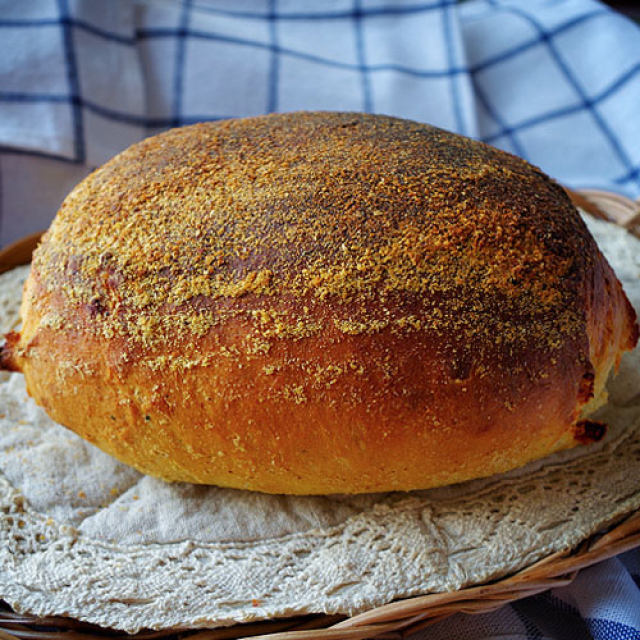【 Bread Bible 】 Cheddar Cheese Mustard Bread
2025-02-26 03:00:42 87

The original recipe comes from the "Cheddar Cheese Bread" in the Bread Bible. I have made some adjustments according to my personal taste, and it is a savory and unique bread with a strong flavor, suitable for serving as a sandwich base< br>
Details of ingredients
Technique
Steps to make 【 Bread Bible 】 Cheddar Cheese Mustard Bread
- 1. Making Sponge Fermentation Head: One day before baking, mix the raw materials of the fermentation head evenly to form a thick paste like texture. Then mix the bread flour, milk powder, and instant dry yeast in the main dough ingredients, and sprinkle this mixture on a sponge fermentation head. Cover with a damp cloth or cling film, ferment at room temperature for 1 hour, and then transfer to the refrigerator for overnight refrigeration; If you don't have time, you can also ferment at room temperature for 1-4 hours (I fermented at 25 ℃ for 2.5 hours). When the fermentation head expands to twice its size, many bubbles are generated, breaking through the surface covered powder mixture to form cracks, indicating the completion of fermentation.
- 2. Making the main dough: Soak the dried cherry in hot water until soft, drain and chop, and mix with wheat germ for later use. Rub cheddar cheese into shreds, mix with Dijon mustard, pepper, salt, and a mixture of flour into the fermenting head, and stir until the dough is completely smooth, with a semi transparent, non cracking film that can be stretched open. Flatten the dough and fold the broken cherry and wheat germ evenly into the dough in portions.
- 3. Basic fermentation: Cover the dough with a damp cloth or cling film, let it ferment at room temperature for 1 hour, then take it out and gently pat it to release air. Roll it round again and continue to ferment for about 30 minutes until the volume doubles. Use your fingers to poke a hole in the center without collapsing or shrinking, indicating that the fermentation is complete.
- 4. Shaping: Take out the dough, divide and shape it according to preference, and put it into a mold. (I am using a wicker basket, but I can also use a toast mold. If using a non stick mold, be sure to apply oil and powder to prevent sticking.)
- 5. Final fermentation: Cover the dough with a damp cloth or cling film and let it ferment in a warm place until it doubles in size. Gently touch the surface with your fingertips, and the concave area will rebound slightly before entering the oven. (I put it on the heater for about 1.5 hours.) 15 minutes before fermentation is complete, place the baking slate in the middle and lower layers of the oven, and then place a baking tray filled with hot water on the bottom layer. Preheat the oven and turn the heat up and down to 200 ℃.
- 6. Baking: Adjust the oven temperature to 180 ℃ and place the dough on a baking stone. Bake for 35-45 minutes until the surface turns golden brown and the fragrance wafts out. After inserting the toothpick into the center and pulling it out without sticking, it can be baked.
- 7. Cooling and preservation: After taking out the bread, brush it with melted butter while it is still hot. After the bread cools to hand temperature, seal it in a fresh-keeping bag for storage.
























